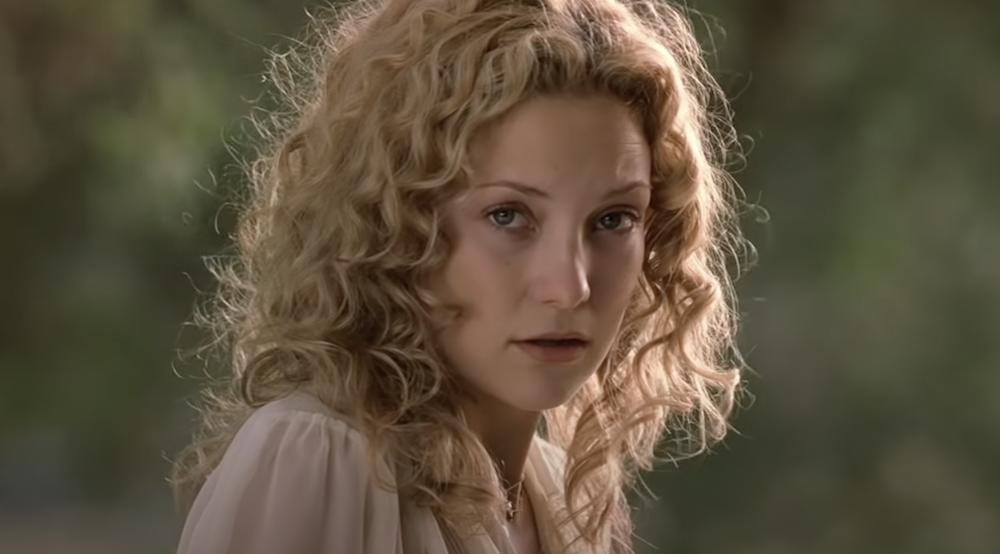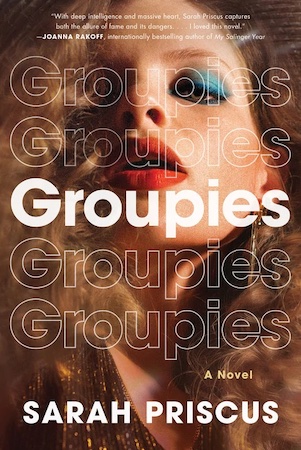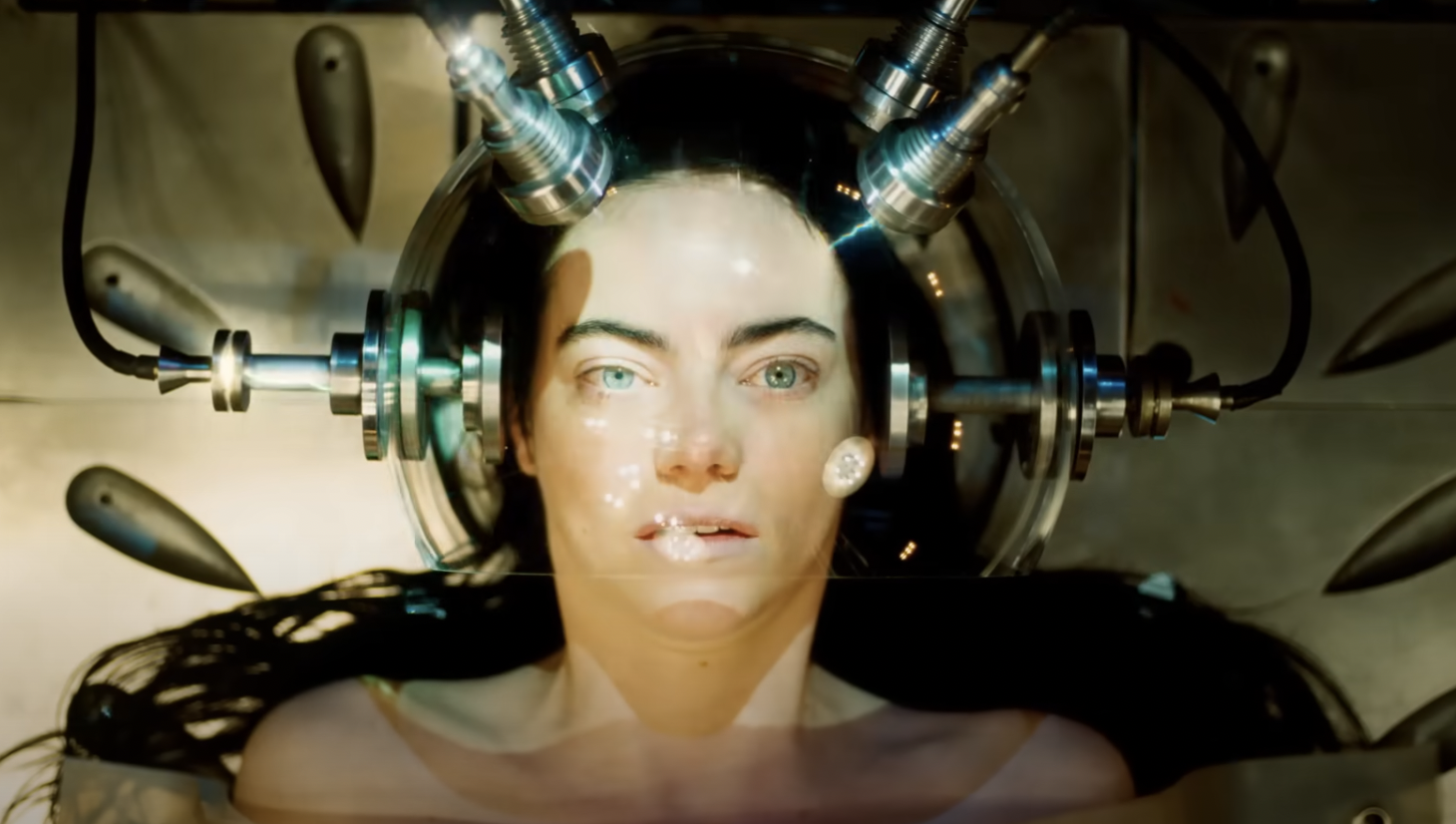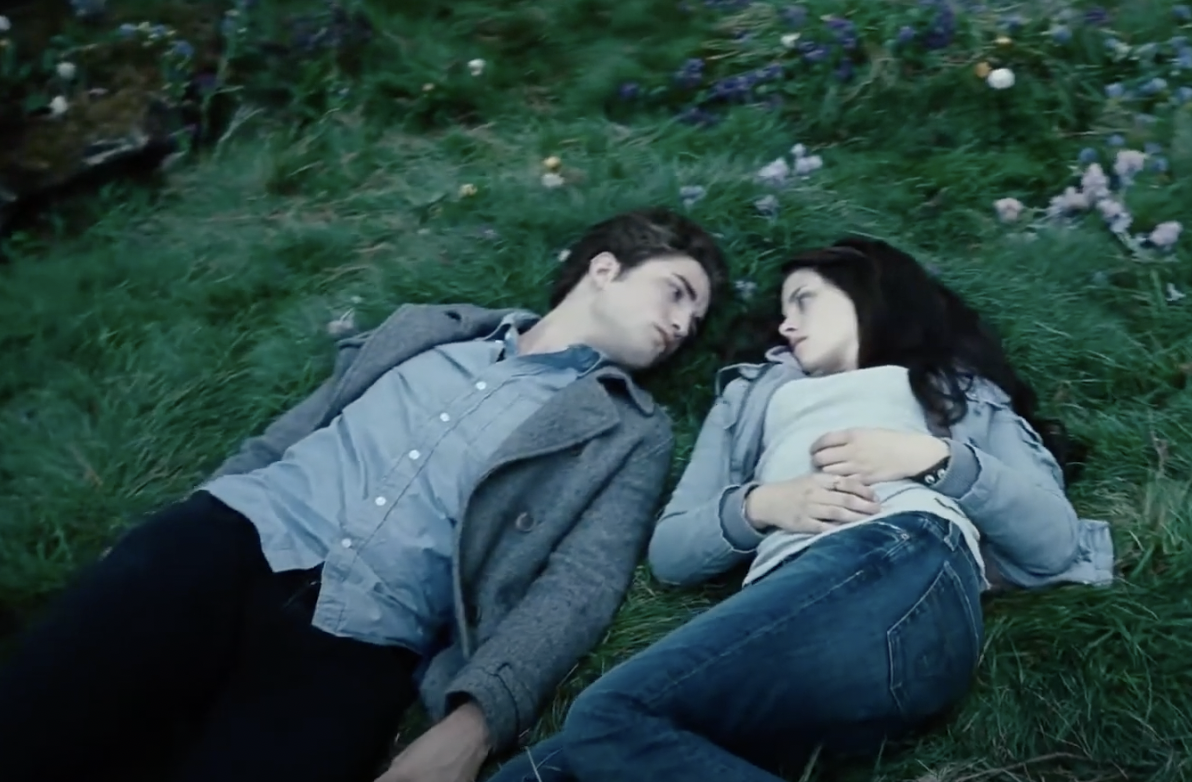Books & Culture
Were We Too Harsh on Penny Lane?
7 years before we had Manic Pixie Dream Girls, “Almost Famous” introduced us to Penny Lane

When I first saw Cameron Crowe’s 2000 movie Almost Famous at sixteen, wide-eyed and hungry for cinematic coming-of-age, I recognized Penny Lane. Played by Kate Hudson with bouncing golden ringlets and a draping fur coat, Almost Famous’s central female character is iconic. The twinkling gleam in her eye and her aloof charisma make her easy to favor. I’d seen stills of her dancing among rose petals on Instagram, artfully captioned screenshots of her cryptic catchphrases circulating on Tumblr, and outfits inspired by her silky tops and bell bottoms on Pinterest mood boards.
But when she made her first appearance in the movie, half an hour in, stepping slow and controlled toward teenage reporter, William (played by a baby-faced Patrick Fugit) in a midnight parking lot, those images didn’t come to mind. What I knew right away was that I wasn’t supposed to like her, because she’d been dubbed a manic pixie dream girl.
Lists of manic pixie dream girls—an archetype of an unusual, easy-breezy wondergirl who adds quirky joy to a man’s humdrum brooding—abounded by the time I was at the end of the aughts. Accessible sites like BuzzFeed, Refinery29, and even crowd-sourced TV Tropes collected examples of this decidedly unprogressive cliche. Penny Lane was listed alongside Natalie Portman’s character in Garden State, Audrey Hepburn in Roman Holiday, and (500) Days of Summer’s titular Zooey Deschanel role. Once a MPDG was named, my modus operandi was clear: refuse to engage with her work of origin and shake my little head at the weak writing that reduced women to plot devices.
I get how Penny Lane was pegged as a MPDG. Her life is devoted to a revolving door of male-fronted bands (primarily Stillwater and its oh-so-moody guitarist Russell, played by Billy Crudup). She takes inexperienced square William under her wing and teaches him how to be free-spirited. She leads a troupe of equally enthusiastic groupies, calling them Band Aids because they inspire the music, set apart from the rabble. Her mystery extends to the real name she’ll “never tell” and countless high-concept speeches and spur-of-the-moment announcements. Penny Lane doesn’t have a lot of feelings. Penny Lane doesn’t seem to need much—aside from male attention—and if the mood strikes, a glass of something cold and bubbly in her hand. More recently, it’s clear a lot of the manic pixie uproar came from pitifully simplified media criticism. Nathan Rabin, who coined the term in a 2007 Elizabethtown review, denounced it as a “cliché” which “spun out of control” in a 2014 Salon article. He called for “its erasure from public discourse” and “an end to articles about its countless different permutations.”
Susie Banks, a postgraduate student of History and Film and Television, explained to me, “the manic pixie dream girl was scrutinized in the digital age through popular discourse. This accessibility accelerates the process of cultural cycles and their respective opposition. When Ramona Flowers or, I don’t know, that blue-haired girl from Eternal Sunshine, came under fire, not just for their purpose as an object for the hapless nerd to gain, but for their value as hallowed objects being based on being “not like other girls,” the knee-jerk reaction sought to subvert their subversion.”
It’s clear a lot of the manic pixie uproar came from pitifully simplified media criticism.
Penny Lane is a subverted subversion of the trope so accidentally ahead of her time that no one realized it. I agree that billing every lighthearted female character an MPDG is passé, but there’s still something interesting about the archetype. Penny Lane fits the mold, but it’s on purpose. She’s a curated persona, putting on a party girl “lampshade” to remain distant and to fit her role. From a writing standpoint, this choice is unexpectedly progressive for a 2000 film pre-empting the MPDG hoopla. Yet, the movie from William’s perspective obscures the depth Penny Lane has. And there’s the catch: with her consumable one-dimensional persona, it’s not just the characters of the film she fools. It’s often audiences. Maybe we weren’t expecting a subversion of a trope so early in that trope’s life cycle, or it wasn’t clear enough.
Asked about Penny Lane’s MPDG billing in 2019, Cameron Crowe pushed back. He told the Los Angeles Times she wasn’t meant to be a “cipher” but rather “a soulful, selfless, loving person who was super into community and kept herself a little bit hidden.” But the movie is semi-autobiographical, and Penny Lane is based on a real person.
Crowe believed he was writing someone ‘real’ who forces herself to act ‘real’ in a way that ends up not being real at all.
Susie Banks suggested “it lends some credibility to her characterization that the story is tethered to reality and not necessarily narrative conventions.” Still, “given the film’s marketing [the poster features a Mona Lisa closeup of Penny Lane] and the narrative of the film, she is certainly symbolic of something, but in that respect she’s also reduced to an object.” Ignoring Penny Lane’s conscious effort to be carefree is bad faith criticism, but ignoring how the film pays little attention to her depth and how her quirk-level-maximum groupie kin don’t demonstrate the same depth is also unwise. It’s no wonder she confused us. Crowe believed he was writing someone “real” who forces herself to act “real” in a way that ends up not being real at all. To quote the film, “it’s all happening”—authenticity, performativity, and God forbid, performative authenticity.
Audiences are left grappling to determine if Penny Lane is a Well-Written Woman or a Very Bad, No Good Manic Pixie Dream Girl.
Are you out of breath yet? I am.
Here’s the thing: figuring out if a trope is subverted well enough is a circular game. Splaying out her parts and piecing them together like autopsy-table wreckage isn’t what matters. What matters about Penny Lane is she’s obscured herself to such an extent that neither the characters in the film nor the audience can determine how much of her persona is performance.
It’s uncool to be an open book. More, it isn’t safe.
Almost Famous emphasizes the mystique of the socially unknown. Characters stipulate what gives rock ‘n’ roll appeal. Russell tells William that rock ‘n’ roll isn’t what you include, but “what you leave out.” Each character plays cat-and-mouse with truth: Stillwater debates what reporter William should know, William lies about his age and takes advantage of misunderstandings, and even the other Band Aids play it cool before flipping their lids as Ozzy Osbourne drives by. It’s uncool to be an open book. More, it isn’t safe. At least it doesn’t feel that way.
Penny Lane lets William see behind her facade every so often. An often-quoted scene has her outline her rules for a happy life on the road: “I always tell the girls never take it seriously. If you never take it seriously, then you never get hurt. If you never get hurt, then you always have fun.” She defers to safe methods of behavior to keep her desirable status. Musicians thrill to see her, shouting her name and begging her to follow them to whatever midwestern city they’re off to next. She throws them off, telling William to “watch” as she pretends she doesn’t recognize them. She might let William see some of her true self, but never for long and never fully. She toys with him to learn his real age (declaring hers to be the same as his every time he modifies). When William clues into the history between Penny Lane and Russell, she overcompensates with an announcement of intent to move to Morocco. Each time the veneer cracks, she repairs it.
The rock ‘n’ roll space is set apart and superior to the “real world.” Stillwater’s singer, Jeff Bebe (Jason Lee) sincerely says when he sees the musicians around him, he knows “one of these people is going to save the world.” Characters feel lucky to be part of this world. That’s why William is drawn to it after being told his sister’s rock records will change his life. That’s why the film shows screaming fans in stadiums and doting groupies at the Riot House. The crux of the rock ‘n’ roll dreamland in Almost Famous is its foolish belief in its absolute sincerity. Lester Bangs (Philip Seymour Hoffman) tells William, “the day [rock ‘n’ roll] ceases to be dumb is the day it ceases to be real.”
The crux of the rock ‘n’ roll dreamland in Almost Famous is its foolish belief in its absolute sincerity.
Penny Lane isn’t dumb and she isn’t real. She’s smart enough to curate her personal performance, but naive enough to not realize she’s getting little in return as she irons bands’ shirts. She acts so mysterious, so strange, so intriguing—it must be Penny Lane being herself. Her winking tricks and rehearsed speeches emulate the authentic love a groupie ought to give.
Being too real is how you “get hurt,” so performing is the only option, especially for a woman. For Penny Lane to have any power, she needs to pretend she doesn’t. Almost Famous is set in the early 1970s, when (second-wave) feminism was more a burgeoning controversy than a pop-fied Instagram axiom. In the film’s rock circle, the roles are clear: men are to be adored, women are to be adoring. Penny Lane understands the dynamic but still refuses to “retire.” Even her name shows her woeful self-determination. Although she’s based on Pennie Lane Trumbull, the association with her namesake Beatles song sticks out. The 1967 song lists the various unusual happenings and citizens of the titular lane. “Behind the shelter in the middle of a roundabout / A pretty nurse is selling poppies from a tray / And though she feels as if she’s in a play / She is anyway.”
Knowing she’s acting in a play works until it doesn’t. When she shrugs off Russell ignoring her for his wife and being sold to band Humble Pie for “fifty dollars and a case of beer,” William begs her to admit she has feelings. She doesn’t fold. It’s only when William tracks her down in a hotel room, overdosing on quaaludes, that the audience sees her as fallible. Still, as William waits for EMTs, he keeps her aloft by having her repeat her stock speeches. As she’s on the verge of death, William remains half-convinced by her manic pixie gloss and tries to kiss her as she goes limp. He still wants the artificial. He still half-believes in it.
As she’s on the verge of death, William remains half-convinced by her manic pixie gloss and tries to kiss her as she goes limp.
William is the hero of Penny Lane’s only damsel-in-distress moment. While it’s true that for most of the film she stands her ground, it’s also true that for most of the film the stakes are way lower: relationship troubles, travel concerns, petty arguments. Penny Lane’s life is only at stake once. The film could have shown her crawling independently to the telephone, or a Band Aid hoisting her away. Instead, William gets his chance to assert his masculinity by acting as savior and, as he scatters away the other men in the room, protector.
The manic pixie dream girl is, in many ways, the modern depthless, helpless damsel. She might “save” her male lead from his crabbiness or ennui, but it’s the male lead who saves her when things become grim. Although these men are often unusual heroes—depressed and bumbling Andrew (Zach Braff) in Garden State, every-boy teenager Leo (Graham Verchere) in Stargirl, or plucky and unsure William—they are always allotted at least a moment to assert their traditional masculinity. The MPDG is not a whole woman, but a silhouette of one. From far away, she has the right shape, but when you get too close, she’s just a shadow. MPDGs are a roundabout way for otherwise-unlikely men to access the traditional masculine role. Through her, they get to have heroic moments. Through her, they get to grow.
I almost want to give Almost Famous some credit. Penny Lane has legitimate problems, so she isn’t entirely static. But Crowe’s writing, despite giving nuance to Penny Lane, doesn’t spare her from being a wilting flower in desperate need of water in this scene of vulnerability. Rather than lingering in this exposed moment and letting the viewer recognize that there’s more to her, the film shrinks away and reverts. While her in-universe manic pixie act ends here, the film’s use of the trope is only reinforced. This is William’s coming-of-age movie, and in saving Penny Lane, he becomes a man.
MPDGs are a roundabout way for otherwise-unlikely men to access the traditional masculine role.
After her brush with death, Penny Lane finally reveals her real name and baby-groupie origins to William. In this scene, the pair is outdoors in soft light unlike the previous stark neon dim. He sees her off as she finally steps on a plane. Is she going to break out of her performative ways? Or will she find a new identity to force herself into? After living performatively since age fourteen, it feels unlikely she’ll totally get in touch with her true self.
When I rewatched the movie, I paused it. I dimmed my living room lights, lit a small soy candle, cleared off the magazine clutter on my coffee table, and waited for the perfect frame to snap a photo for my Instagram story. I was so proud of cracking the code of Penny Lane’s performative authenticity! I had to tell everyone. I looked at the photo. I snapped the light back on and stuck my feet on the table with a slouch. I was picking and choosing how to present my life, pretending I hadn’t picked at all. I’m bound to the same self-curation curse as Penny Lane.
Almost Famous came out long before even Myspace, much less Instagram and TikTok. But Penny Lane’s performative authenticity mirrors our contemporary social media trends. Social media might be meant as the space where I’m just “being myself” online, but that’s never been true. Denizens of Instagram and other platforms are hyper-aware of how we present ourselves. I’m not under the impression I’m the first person to have this thought. For a while, we all took it as fact. Selfies over-processed through VSCO and Facetune and carefully drafted not-so-off-the-cuff tweets were internet bread and butter. Lately, though, there’s been a push toward so-called authenticity on the internet.
In 2019, The Atlantic declared the end of the “Instagram aesthetic”—the death of curated feeds and the dawning of the effortless Emma Chamberlain era. Photo dumps (collections of random, unrelated images) are on the formerly highly-produced feeds of Ariana Grande and Bella Hadid. Social media’s casual now! We’re all just posting whatever we want! We’re being so real and authentic, right?
Right?
The careless aesthetic doesn’t achieve authenticity so much as it performs it. I’m guilty of arranging an open book to lie just so, and pulling open the blinds to snap a seemingly candid shot. I want to seem like I’m always charming and unbothered. When I do this, I’m not being myself. I’m acting, setting up a role and filling it. Just like Penny Lane, who puts on the lampshade to fit her Band Aid role, I put on my own hat. I’m working so hard to look like I’m not trying. But who am I if I’ve been doing this for so long?
True feelings don’t fit into the manic pixie role.
Penny Lane’s self-performance created unhealthy distance from others. It might have felt safe to her, but it led to unrecognized turmoil that barely anyone could detect. True feelings don’t fit into the manic pixie role. We as an audience need to know better than to fall for it, especially those of us who find ourselves in a similar position. It’s all happening, and I can’t stop it. The real, the fake, the fake-real.
Susie Banks said, “If subversion becomes the de facto mode of presenting oneself then … where do we go from here? I bet you the next cultural trend will be duckface nostalgia. I don’t see myself joining the ranks of pop culture critics thinking they’re inventing the wheel by pointing out manufactured authenticity. This precarious point in time still has a long way to go before we can make sweeping statements about the impact of social media. There is also the subconscious of outward expression, which is a dumb way of saying ‘people like Instagram because it’s fun.’”
And it is fun! It’s fun, and current, and frankly unavoidable for most. I can’t escape the realm of manufactured authenticity while we’re still all looped into it. After I learned what a manic pixie dream girl was, a strange thing happened. As much as I knew these women were plot devices and not real, I still wanted to be like them. I dressed in Zooey Deschanel kitsch, I pinned vinyl record sleeves to my walls, I skipped over puddles and forced myself to giggle. Maybe I could do it right, I thought. I could be the real version, the whole version, of these fake girls.
Maybe, I thought, if I put on the lampshade, I’ll be the one to have it grow into me and stick. I’ll be the one who never needs to take it off.









